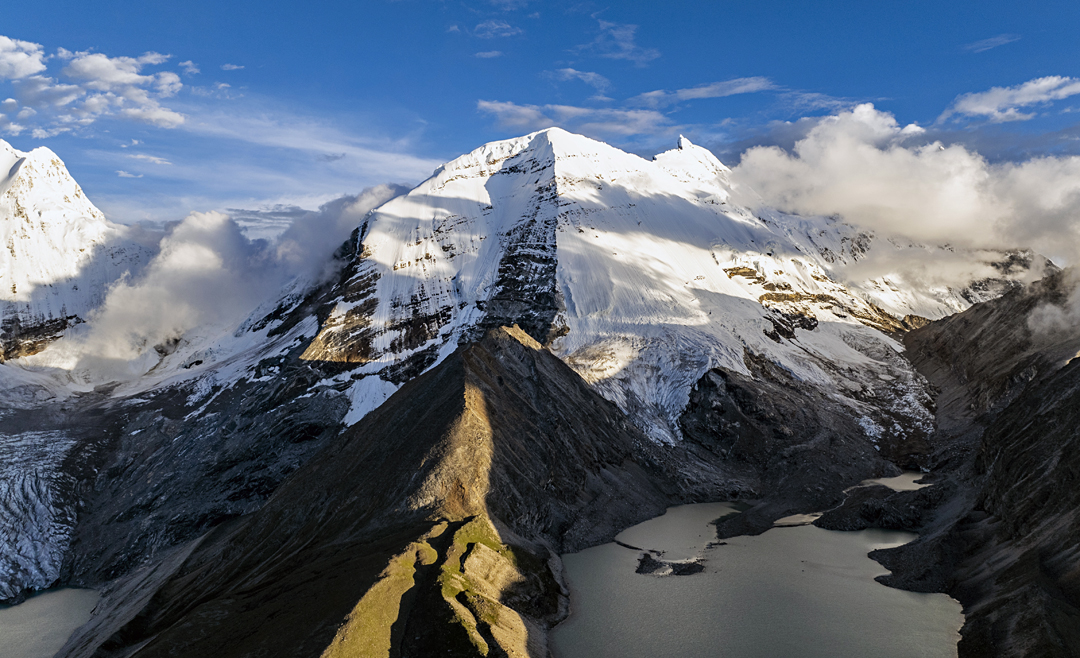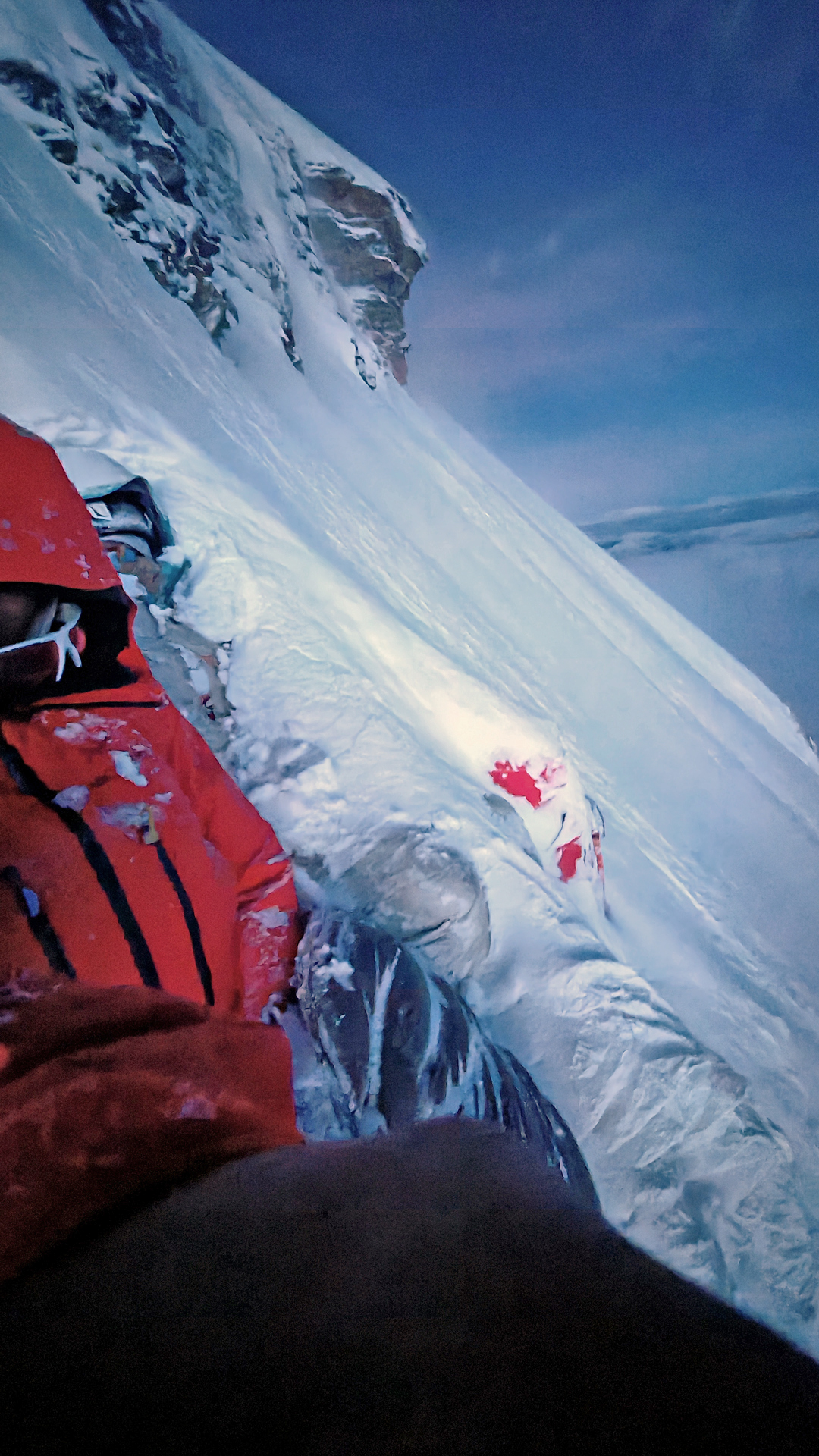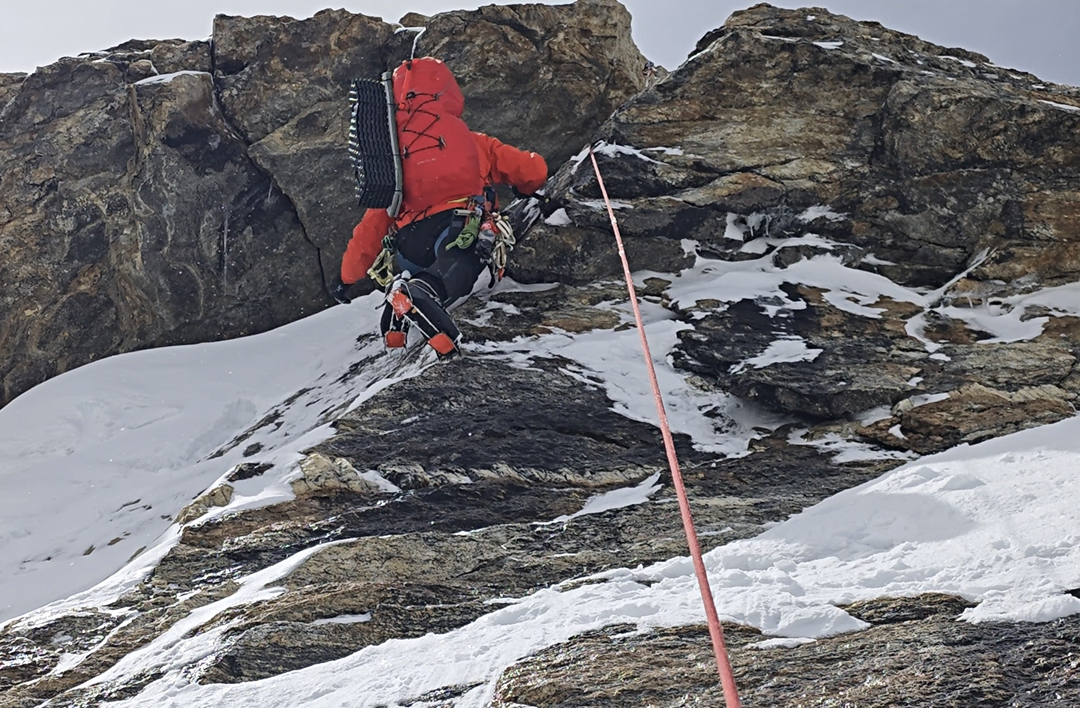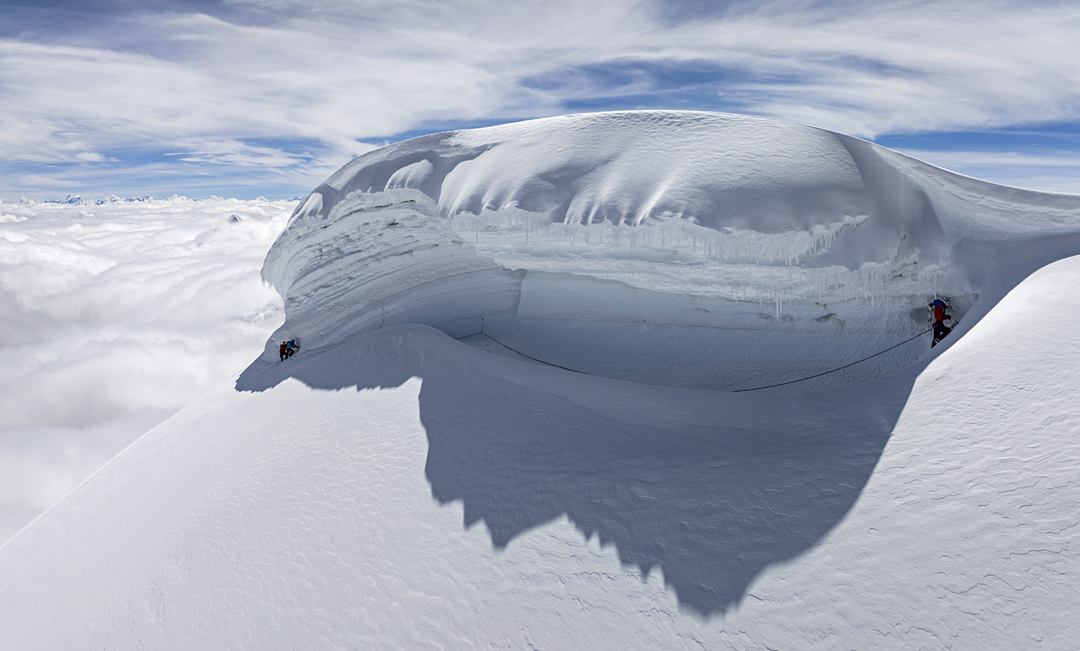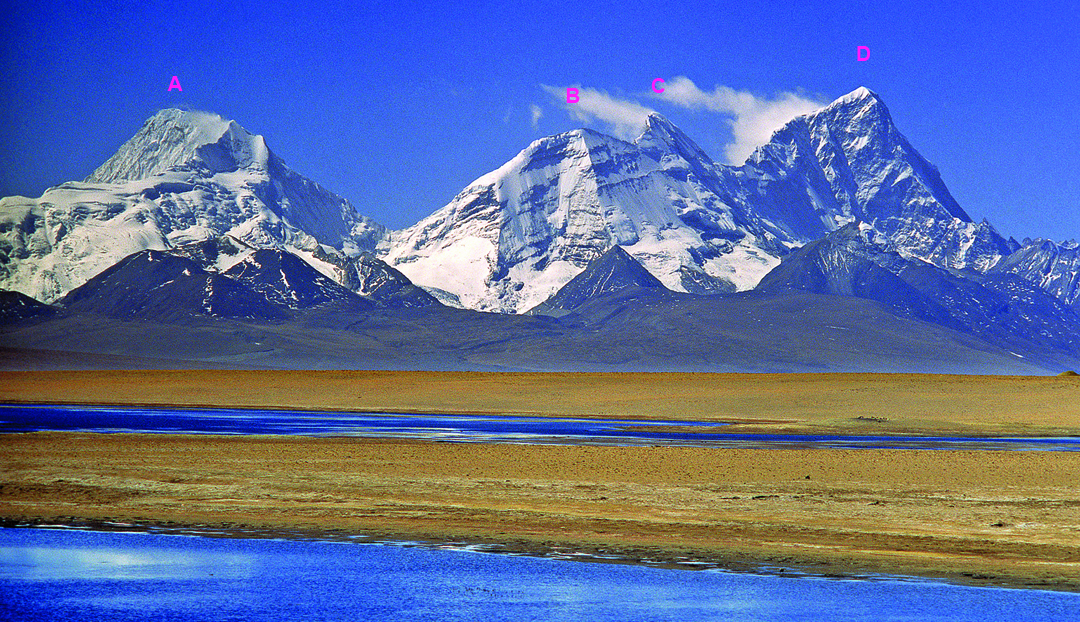Chomolhari III, First Ascent, via North Spur
China, Tibet, Bhutan Himalaya
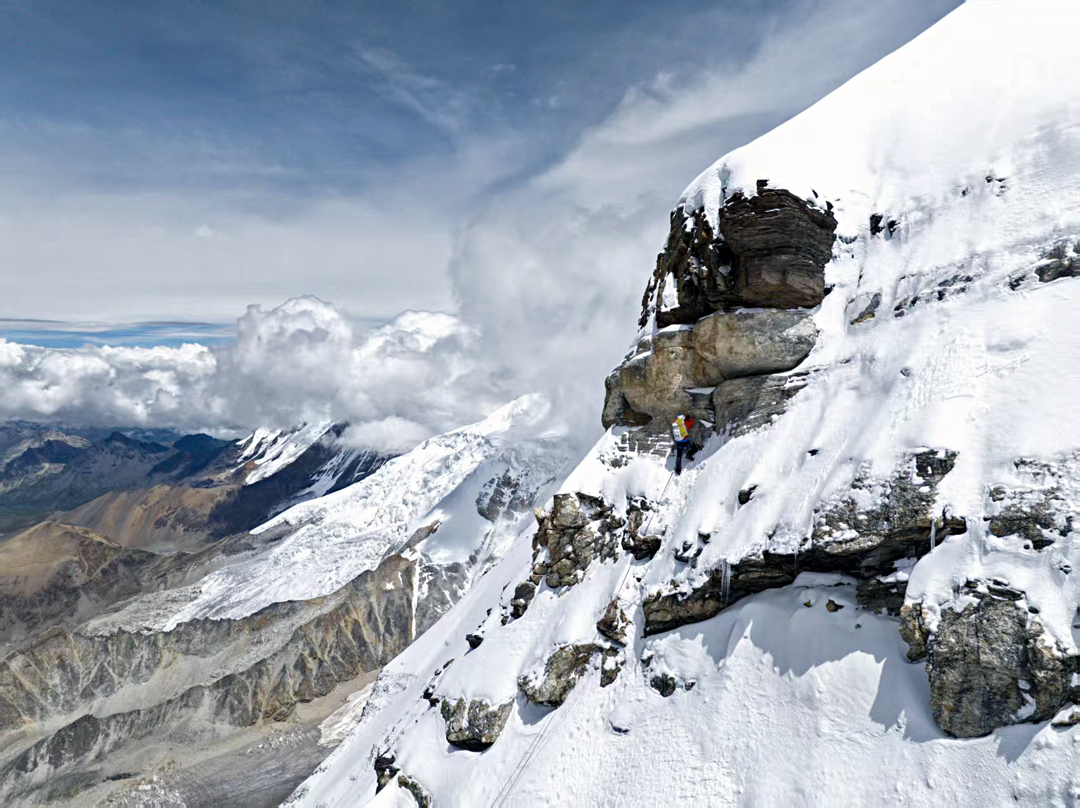
Chomolhari III (6,706m, 27°51'11.73"N, 89°18'2.24"E), on the China-Bhutan border, was first attempted in February 2025 by Fu Youngpeng and Liu Yang from China. They reached 6,000 meters on the north spur, but were forced to descend due to strong, cold winds.
Liu returned in July with Song Yuancheng and me, hoping for more favorable summer conditions. We started the route on July 23, climbing through the night because the lower half of the route is heavily exposed to avalanches. For speed, we simul-climbed this section with minimal protection. By dawn we had already passed Liu’s February high point.
On the north spur, three prominent rock bands form the cruxes. By 3 p.m. we had cleared the first rock band, via a protectable multi-pitch mixed climb. We had now been on the go for 19 hours and all three of us were exhausted, so we decided to make an early bivouac at 6,200 meters, just below the second band. The night was far from comfortable, as our ledge was too small, forcing us to sit up until morning. In addition, there was continuous spindrift, and I had to get up every hour to clear it. Liu and Song fared no better, and none of us slept at all.
On the 25th, we climbed through the second rock band via several pitches of M4 and M5, and by evening we had reached a small cave beneath a boulder in the third rock band, at 6,450 meters. This was a welcome and sheltered bivouac site where we could finally lie down free from drifting snow.
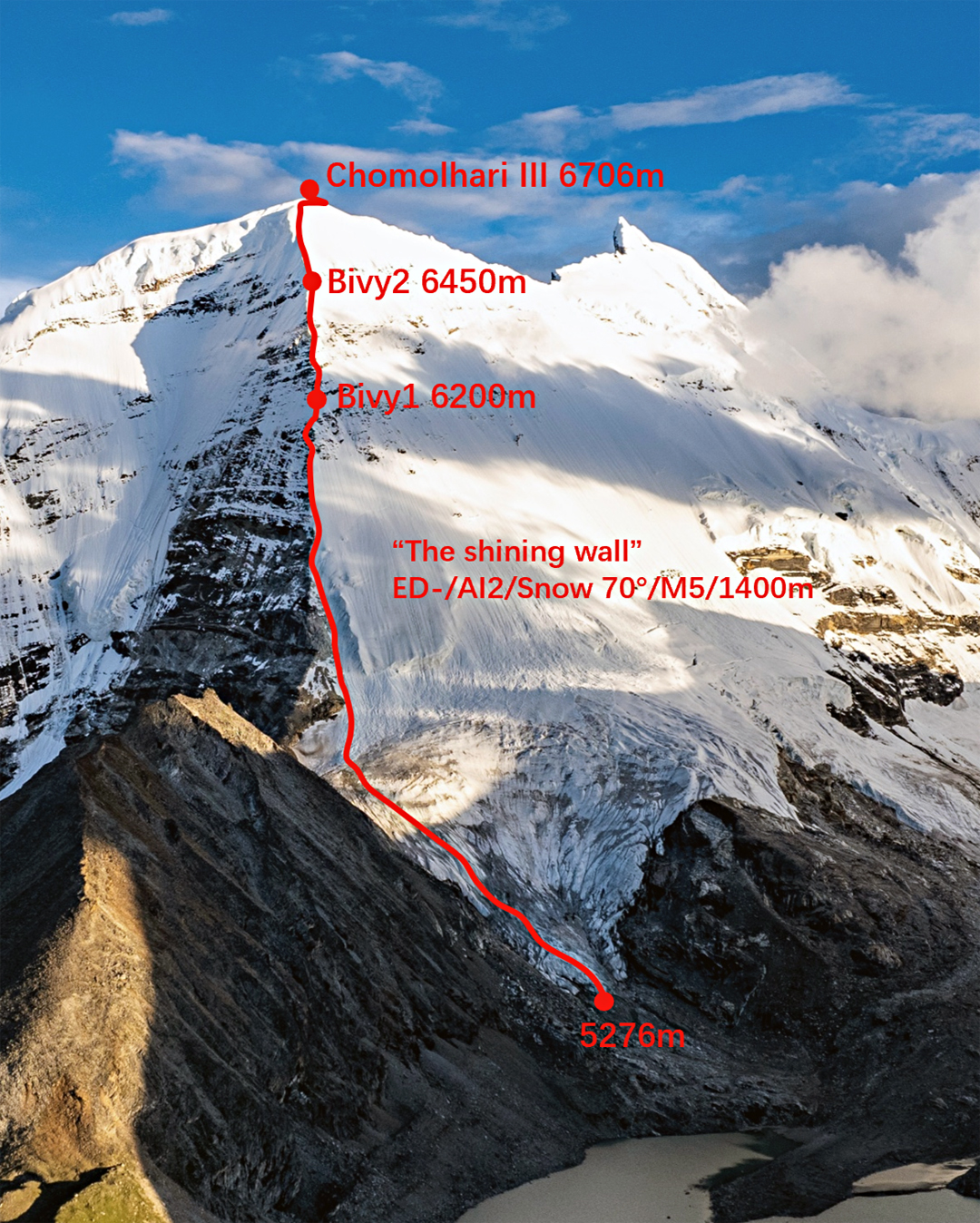
Summit day began with a steep section of deep, soft snow that repeatedly collapsed underfoot. I tried three different lines without success. I handed the lead to Liu, who, after several attempts, found a firmer section that allowed progress and got us through the final crux of the climb. We were then able to continue straight to the cornice, which we skirted on the right to reach the summit of Chomolhari III just after mid-day.
We downclimbed to our top bivouac site, spent one more night there, and on the 27th downclimbed to the top of the second rock band before beginning a series of rappels. Anchor placements proved difficult, and we were forced to abandon several cams. As Liu began to show symptoms of HACE, we continued to rappel even after the terrain eased below 6,000 meters. We arrived at base camp during the morning of the 28th.
Our 1,400-meter route, named The Shining Wall, had technical difficulties of AI2 M5 70° snow, and each member free climbed every pitch.
—He Lang, China
NOTES ON THE CHOMOLHARI GROUP: Chomolhari III is to the east of Chomolhari (7,326m), the highest peak in this group along the China-Bhutan border. The first ascent of the main summit is one of the more underrated achievements in mountaineering history and an epic tale of Himalayan suffering. It was climbed alpine style in 1937 by Freddie Spencer Chapman (U.K.) and a very young and inexperienced Pasang Dawa Sherpa (Nepal). Without crampons, they climbed the southeast spur and south ridge, in Bhutan, which they reached via a circuitous trek from Tibet. This is one of the earlier significant ascents achieved by a Sherpa. (Two Sherpas were in the summit party on the 1930 first ascent of 6,710-meter Lhonak Peak and the 1931 first ascent of 7,756-meter Kamet. Prior to this “native porters” accompanied British mountaineer Alexander Kellas on many of his first ascents, including 7,125-meter Pauhunri in 1911, but there is nothing to say with certainty that they were ethnic Sherpas.)
Along the frontier ridge to the east, between the main summit and Chomolhari III, lies Chomolhari II (a.k.a. Tserimkang, 6,972m). The main (west) top has not been summited, but the east top (ca 6,922m) was climbed via the northwest face, in 2006, by a Slovenian team, which later recorded two new routes on the north side of Chomolhari (AAJ 2007).


